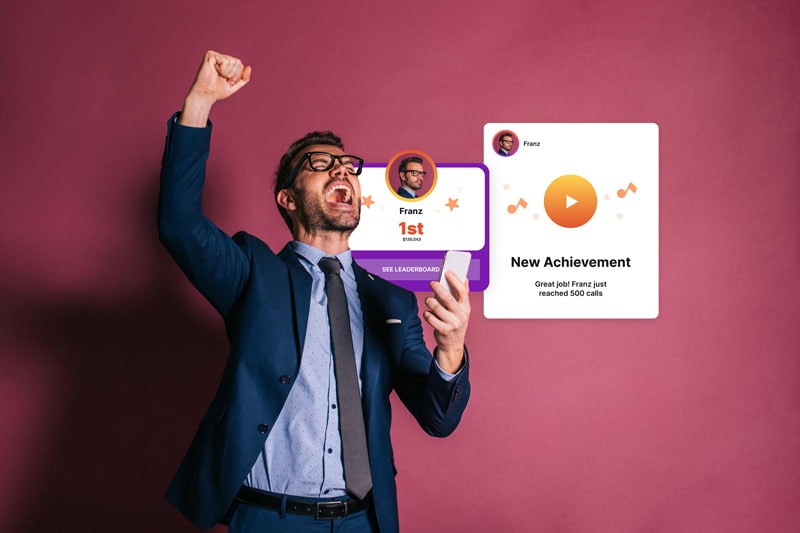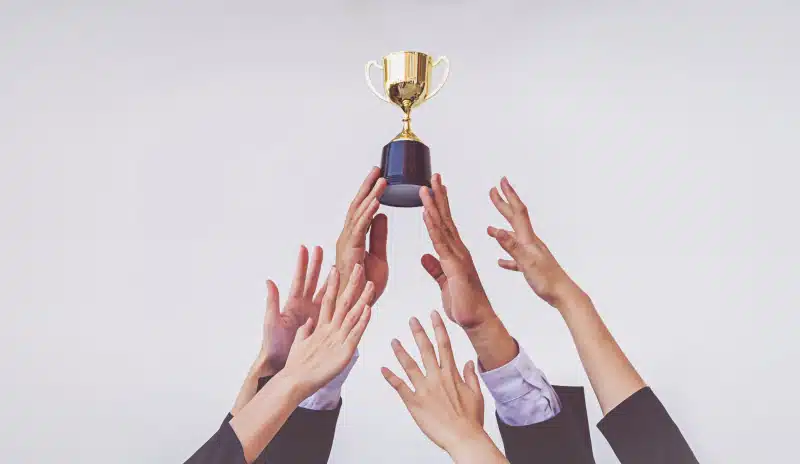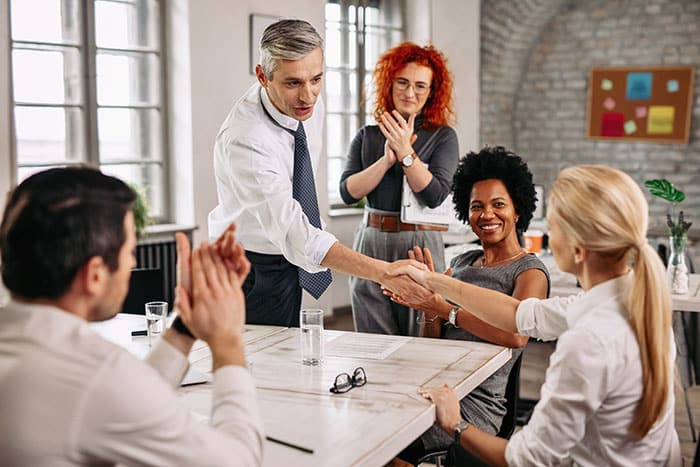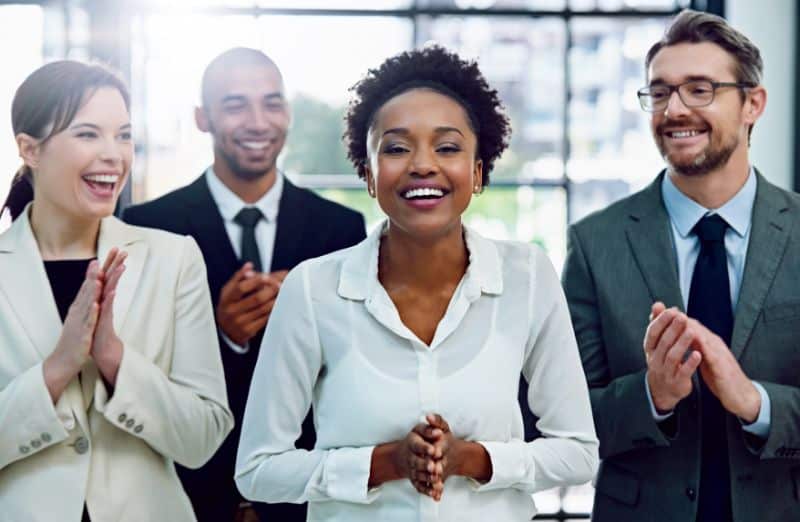Gamification Rewards – The 6 Types

The benefits of gamification are numerous, from improved motivation to better collaboration, instant feedback, performance boost, and more sales. Rewards play a significant role in the whole gamification process, which is exactly what we’ll discuss in this post. Gamification has emerged as a powerful tool in enhancing customer loyalty and engagement, transforming how brands interact with their audiences. By integrating game design elements into loyalty programs, businesses can create a more engaging and rewarding experience for their customers. This approach not only motivates customers to participate but also encourages desired behaviors, such as repeat purchases and increased interaction with the brand.

As we delve into the six types of rewards, we’ll explore how each can be strategically utilized to foster stronger brand loyalty and boost customer engagement. By understanding and implementing these gamification strategies, businesses can significantly enhance customer satisfaction and retention, ultimately contributing to increased customer lifetime value and business growth. So, let’s go through the six types of rewards and the gamification loyalty program.
1. Fixed action rewards
Fixed action rewards create a transparent roadmap for users, offering a clear and structured path to earning exciting rewards. This gamification strategy is exemplified by sales incentive programs, where participants know exactly what actions will lead to tangible rewards. By providing a clear set of goals and milestones, fixed action rewards eliminate ambiguity and ensure that users understand how to achieve success. This approach not only enhances individual performance but also fosters a unified team effort, aligning everyone towards common objectives.
The effectiveness of fixed action rewards lies in their ability to offer measurable progress. By linking points or rewards to specific milestones, individuals can track their progress and stay motivated. The ability to see tangible results encourages ongoing engagement and helps maintain enthusiasm over extended periods. This transparency and clarity are crucial for motivating customers and employees alike, as they can see the direct impact of their actions on their rewards.
Moreover, fixed action rewards offer targeted motivation by aligning rewards with the company’s key objectives. This ensures that every action taken by employees contributes directly to the company’s growth and strategic goals. By incentivizing specific behaviors, businesses can drive the actions that lead to overall success, creating a win-win situation for both the company and its employees.

To implement fixed action rewards effectively, businesses can transform their incentive programs into truly engaging experiences. For example, Spinify Points act as the currency of a reward system, where point values are assigned to every desired action, such as closing deals, generating leads, or exceeding quotas. This gamification strategy not only motivates employees but also encourages them to prioritize tasks that are most beneficial to the company.
Additionally, a Reward Store serves as a virtual prize center, offering a curated selection of enticing rewards that employees can redeem with their points. By providing a mix of tangible items, experiences, and extra perks, businesses can cater to individual preferences, enhancing employee satisfaction and loyalty. Leaderboards further fuel friendly competition and public recognition, encouraging employees to strive for the top while fostering a sense of community and camaraderie.
Customization is key to making fixed action rewards relatable and engaging. By creating custom badges, challenges, and themed incentives aligned with company culture and goals, businesses can personalize the gamified loyalty experience, increasing employee commitment to the program. This approach not only enhances customer engagement and employee motivation but also contributes to a more vibrant and dynamic workplace culture, ultimately leading to stronger brand loyalty and increased customer lifetime value.
Fixed action rewards are a powerful tool in gamification loyalty programs, offering a structured path to success that motivates both customers and employees. By providing clarity, measurable progress, and targeted motivation, businesses can create an engaging and rewarding experience that drives repeat purchases, enhances customer satisfaction, and fosters long-term loyalty. This strategy not only benefits the brand but also enriches the overall customer experience, making it a vital component of any successful loyalty program. Here’s why they work:
Clarity
Sales teams thrive on well-defined goals. Fixed action rewards eliminate ambiguity, ensuring everyone understands how to succeed. This clarity not only enhances individual performance but also fosters a unified team effort, aligning everyone towards common objectives.
Measurable Progress
By linking points or rewards to specific milestones, individuals can track their progress and stay motivated. The ability to see tangible results encourages ongoing engagement and helps maintain enthusiasm over extended periods.
Targeted Motivation
Incentive programs align rewards with the company’s key objectives, driving the behaviors that lead to overall business success. This targeted approach ensures that every action taken by employees contributes directly to the company’s growth and strategic goals.

How to implement it?
Transform your incentive program into a truly engaging experience. Here’s how its features amplify your fixed action rewards:
- Spinify Points: Points act as the currency of your reward system. Assign point values to every desired action – closing deals, generating leads, exceeding quotas, and more. This gamification strategy not only motivates employees but also encourages them to prioritize tasks that are most beneficial to the company.
- Reward Store: This is your virtual prize center! Curate a selection of enticing rewards that employees can redeem with their points. Offer a mix of tangible items (company swag, gift cards), experiences (lunch with the CEO), or even extra PTO. This variety caters to individual preferences, enhancing employee satisfaction and loyalty.
- Leaderboards: Fuel friendly competition and public recognition with dynamic leaderboards. Employees can see their ranking in real-time, encouraging them to strive for the top. Leaderboards also foster a sense of community and camaraderie, as team members cheer each other on and celebrate collective achievements.
- Customization: Spinify’s flexibility allows you to tailor the platform to your exact needs. Create custom badges, challenges, and themed incentives aligned with your company culture and goals. This personalization makes the gamified loyalty experience more relatable and engaging for employees, increasing their commitment to the program.
By implementing these gamification tactics, businesses can significantly enhance customer engagement and employee motivation. Fixed action rewards not only create a structured path to success but also contribute to a more vibrant and dynamic workplace culture, ultimately leading to stronger brand loyalty and increased customer lifetime value.
Another example is a loyalty program.
Loyalty programs act as a marketing strategy to motivate users or encourage customers to buy products or services by offering various perks, including discounts and rewards. The gamified loyalty program includes a tangible reward that loyal customers obtain after meeting all necessary requirements.
For example, a customer knows they will get something for free if they engage or make a specific number of purchases. Other examples of a gamified loyalty program are frequent flyer miles, collecting loyalty points, punches on the card, and so much more.
Gamification loyalty programs can increase customer engagement while building relationships and communities among all participants. People feel motivated to interact with your business or brand, which leads to repeat purchases.

A major obstacle here is that many brands or businesses aren’t sure how to apply gamification to loyalty programs. Doing so is quite simple when you have clear and precise goals. Set challenges, encourage sharing and interaction, make surveys and quizzes to spice things up, and create leaderboards.
Basically, you can introduce gamification to a loyalty program by making it more fun, challenging, and exciting. People need to feel like they’re having fun while also having the opportunity to win something or get some sort of value for customer loyalty.
Having fixed action rewards helps prevent a common mistake – too many rewards. In an attempt to increase engagement, loyalty, and motivation, some businesses arrange too many rewards. They do it too frequently or add too many rewards, points, or badges into the mix.
Doing so prevents the target audience from taking rewards seriously. Generally speaking, a gamification reward system should have a proper structure, and its main goal should be to motivate people to perform a specific action, not any action.
There are many ways to set up fixed action rewards in gamification. Time-dependent rewards can fall into this category as well.
These rewards are limited by time or triggered by a time-based event. For example, a company decides to reward users with a discount of 30% to 40% on someone’s birthday. Or a customer can get one free cup of coffee on their birthday.
Options are endless. It’s clear what the requirements are. Customers also know what the reward is. They know everything necessary for this reward. But, they can only get that reward at a specific point due to the time limit.
2. Sudden rewards

Sudden rewards are an intriguing aspect of gamified loyalty programs, where users or customers receive unexpected rewards without any prior indication or schedule. These surprises can significantly enhance customer engagement and brand loyalty due to their element of surprise and delight. The unpredictability of sudden rewards makes them a powerful tool in gamification strategies, as they tap into the human love for surprises and unexpected gifts.
The effectiveness of sudden rewards lies in their ability to evoke positive emotions and create memorable experiences for customers. When a customer receives an unexpected reward, it not only makes them feel valued and appreciated but also strengthens their emotional connection with the brand. This emotional bond is crucial for fostering long-term customer loyalty and encouraging repeat business.
Sudden rewards can be implemented in various ways to engage customers and boost brand interaction. For example, a brand might surprise its customers with a discount coupon, a gift card, or exclusive access to a new product. These rewards can be triggered by specific actions, such as making a purchase, signing up for a newsletter, or participating in a survey, but the timing and nature of the reward remain unknown to the customer.
One of the key benefits of sudden rewards is their ability to generate word-of-mouth marketing. When a customer receives a surprise reward, they are likely to share their excitement with friends and family, spreading positive word-of-mouth about the brand. This organic promotion can attract new customers and enhance the brand’s reputation in the market.
Moreover, sudden rewards can encourage customers to engage more frequently with the brand in hopes of receiving another surprise. This increased interaction can lead to higher customer retention rates and stronger brand loyalty. By incorporating sudden rewards into a gamified loyalty program, businesses can create a dynamic and engaging customer experience that keeps participants coming back for more.
In conclusion, sudden rewards are a valuable component of gamification loyalty programs, offering a unique way to enhance customer engagement and build stronger brand loyalty. By surprising customers with unexpected rewards, businesses can create memorable experiences that drive repeat purchases and foster long-term customer relationships. This strategy not only benefits the brand but also enriches the overall customer experience, making it a win-win situation for both parties.
3. Random rewards
Random gamification rewards are a captivating element of gamified loyalty programs, offering participants a surprise element that keeps them intrigued and engaged. These rewards are given after completing a required action, but the specific reward remains a mystery until it’s revealed. This unpredictability adds an exciting twist to the user experience.
To clarify, random rewards differ from sudden rewards in gamification. While both are unexpected, the distinction lies in their triggers. Random rewards follow a specific or expected action, yet the nature of the reward remains unknown to the participant until it is received. In contrast, sudden rewards are triggered by unexpected events and lack a predetermined schedule.
The primary purpose of random gamification rewards is to inject an element of surprise and excitement into the customer journey. This approach not only enhances the fun factor but also significantly boosts motivation and customer loyalty. Participants are more inclined to engage with the brand, driven by the anticipation of discovering what reward awaits them after completing a specific action.

The allure of random rewards lies in their ability to evoke a sense of mystery. Participants enter contests or challenges without knowing the exact reward, which heightens their curiosity and eagerness to participate. This element of surprise acts as a powerful motivator, encouraging customers to engage more frequently and make repeat purchases.
Moreover, random rewards can be strategically used to encourage desired behaviors. For instance, a brand might offer random rewards for completing surveys or engaging in social media activities, thereby increasing customer interaction and feedback.
The mystery surrounding random rewards captivates participants, fostering a deeper connection with the brand. This engagement translates into increased customer loyalty, as individuals are more likely to return for future interactions, hoping to uncover more surprises.
Incorporating random rewards into a gamified loyalty program can be a game-changer for businesses seeking to enhance customer engagement. By leveraging the element of surprise, companies can create a dynamic and captivating experience that encourages ongoing participation and strengthens the bond between the brand and its loyal customers. The result is a vibrant community of engaged participants, driving repeat business and contributing to the brand’s overall success.
4. Prize pacing for bigger rewards
Prize pacing is a sophisticated gamification practice that leverages the psychological principle of scarcity to enhance the perceived value of rewards. By strategically distributing rewards in smaller, incremental doses over time, businesses can create a sense of anticipation and excitement among participants. This approach often involves the use of collection sets, where individuals must gather all items within a set to qualify for a reward.
The allure of prize pacing lies in its ability to foster deeper engagement with the brand. As participants strive to complete their collection, their interactions and purchases with the brand naturally increase. This gamification strategy not only heightens excitement and fun but also cultivates a sense of achievement and satisfaction when the collection is completed.

By implementing a prize pacing rewards program, businesses can selectively reward only those who demonstrate dedication and persistence in completing the entire set. This exclusivity adds a layer of prestige to the reward, making it more desirable. The thrill of the chase for collection pieces captivates participants, encouraging ongoing engagement and fostering loyalty.
Moreover, prize pacing allows brands to maintain control over the distribution of rewards, ensuring that they are awarded to the most committed participants. This targeted approach not only enhances customer loyalty but also drives repeat purchases, as individuals are motivated to continue their quest for completion. Ultimately, prize pacing transforms the reward experience into an exciting journey, where participants are not just recipients of rewards, but active players in a captivating game-like experience.
5. Rewards from friends
Rewards from friends are a unique and impactful type of gamification reward that leverages the power of social connections and word-of-mouth marketing. Unlike other rewards, these cannot be earned, purchased, or collected by the individual. Instead, they are bestowed upon someone by their friends or family members, creating a sense of community and shared experiences.
The most significant aspect of this gamification reward is its ability to drive word-of-mouth promotion, which is a powerful tool for enhancing customer engagement and boosting sales. When people receive rewards from their friends, they are more likely to share their experiences, leading to increased brand recognition and customer loyalty. This organic promotion strategy is cost-effective compared to traditional marketing strategies and stimulates conversations about the brand or business, thereby increasing its visibility and appeal.
To implement this type of reward, businesses often utilize friend discounts or referral fees. For instance, when a customer refers a friend to a service or product, both the referrer and the new customer receive a reward, such as a discount or a cash bonus. This approach not only incentivizes existing customers to bring in new ones but also enhances customer engagement through the “friend” component.

A classic example of this strategy is online services offering monetary rewards for successful referrals. Many people have encountered these types of rewards, where they receive a specific amount of money or discount for bringing a friend on board. This method capitalizes on the power of recommendation, encouraging customers to engage with the brand and share their positive experiences with others.
Moreover, rewards from friends foster a sense of belonging and community among customers. As they share these rewards and experiences, they build stronger connections with each other and with the brand. This sense of community can lead to increased loyalty, as customers feel more invested in the brand and its success.
Incorporating rewards from friends into a gamified loyalty program can significantly enhance customer engagement and drive business growth. By tapping into the natural human desire for social connection and shared experiences, businesses can create a more dynamic and engaging loyalty program that not only rewards customers but also strengthens their bond with the brand.
6. Rolling rewards
Rolling gamification rewards provide an exhilarating way to keep customers engaged by introducing an element of chance following the completion of specific actions. A prominent example of this reward system is any contest or the purchase of lottery tickets, where participants eagerly await the outcome with hopes of a win.
At its core, rolling rewards are built on the premise that someone will emerge victorious every time, creating a compelling allure for participants. The longer they remain in the game, the more confident they become about their potential to win. This gamification strategy taps into the human desire for anticipation and excitement, making it a powerful tool for maintaining customer interest over time.
One of the key attractions of rolling rewards is their accessibility. The requirements to participate are often minimal, and the cost of entry, such as purchasing a ticket, is usually low. Despite the slim odds of winning, the substantial rewards at stake, such as large sums of money in a lottery, entice participants to keep trying their luck. This approach not only keeps customers engaged but also fosters a sense of hope and possibility, which can be incredibly motivating.

Moreover, rolling rewards have a unique way of creating brand advocates. Those fortunate enough to win become enthusiastic promoters of the brand or business. Their testimonials and word-of-mouth recommendations can significantly enhance brand visibility and attract new customers. The excitement and satisfaction of winning a rolling reward can lead to increased loyalty, as winners are likely to continue engaging with the brand in hopes of future success.
Incorporating rolling rewards into a gamified loyalty program can be a game-changer for businesses looking to boost customer engagement. By leveraging the thrill of chance and the potential for significant rewards, companies can create a dynamic and captivating experience that encourages ongoing participation. This strategy not only enhances customer retention but also contributes to stronger brand loyalty and increased sales, as customers are motivated to stay connected with the brand in pursuit of enticing rewards.
The Bottom Line
Gamified rewards are a powerful and multifaceted approach to increase customer loyalty, enhance customer engagement, and promote brand identity effectively. By integrating game design elements into loyalty programs, businesses can create a dynamic environment that motivates customers to participate actively, fostering a deeper connection with the brand. This strategy not only encourages desired behaviors, such as repeat purchases and ongoing engagement, but also contributes to increased customer satisfaction and retention.
As the leading sales gamification company, Spinify offers a comprehensive suite of tools designed to seamlessly implement your gamification strategy. These tools enable businesses to craft personalized and exciting gamified loyalty programs that cater to individual customer preferences, ultimately enhancing customer lifetime value. With Spinify, you can challenge your team to achieve higher performance levels while simultaneously boosting customer engagement through innovative gamification tactics.
By leveraging Spinify’s expertise in gamification, businesses can transform their loyalty programs into captivating experiences that reward customers for their loyalty and encourage them to remain engaged. The result is a vibrant community of loyal customers who are motivated to interact with your brand, driving increased sales and fostering stronger brand loyalty. Explore how Spinify’s gamification tools can revolutionize your reward program and deliver tangible business results, making your brand stand out in today’s competitive market. Book a demo today!
Put those insights into practice.
Set your team up for success by improving their performance through gamification.
Back to blog








